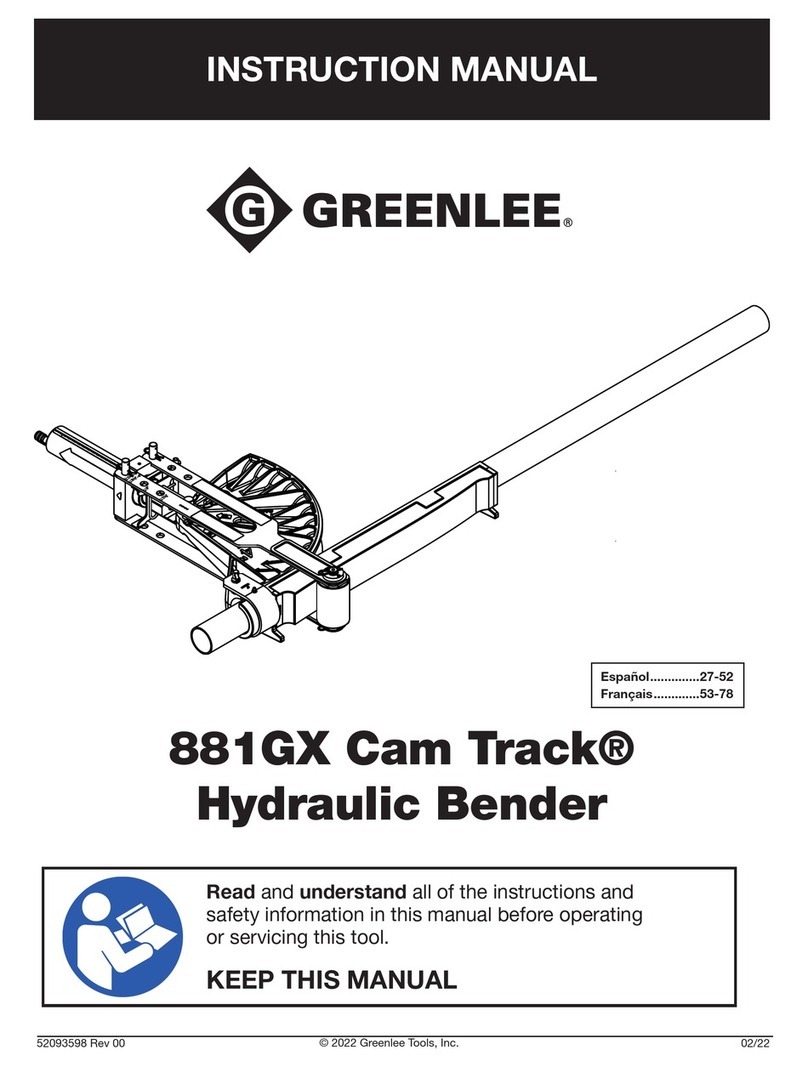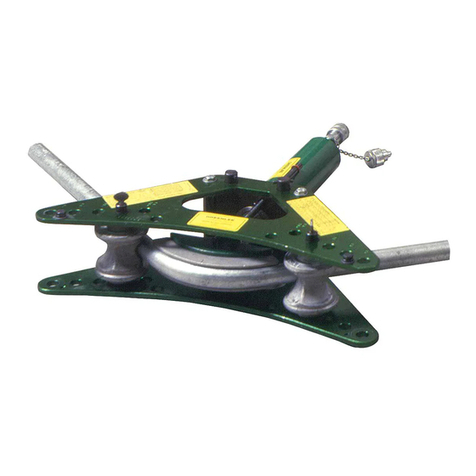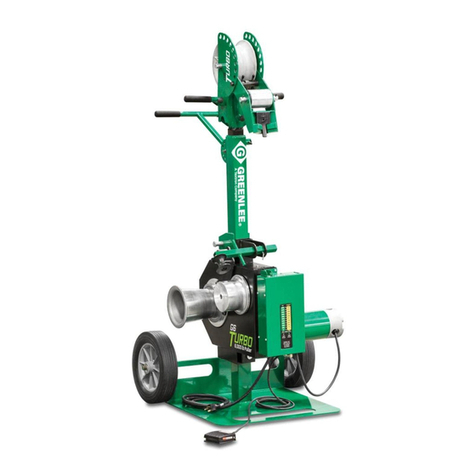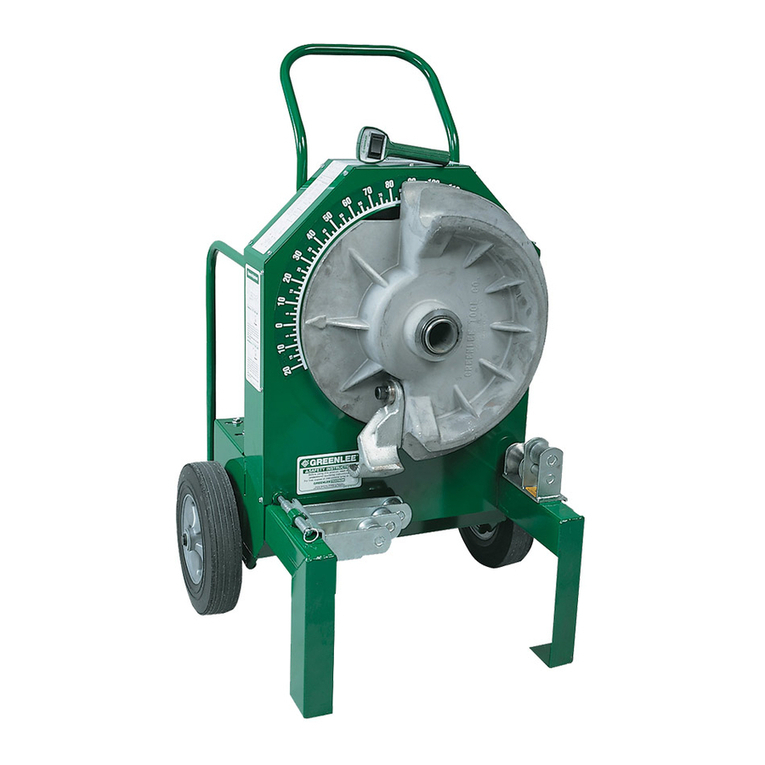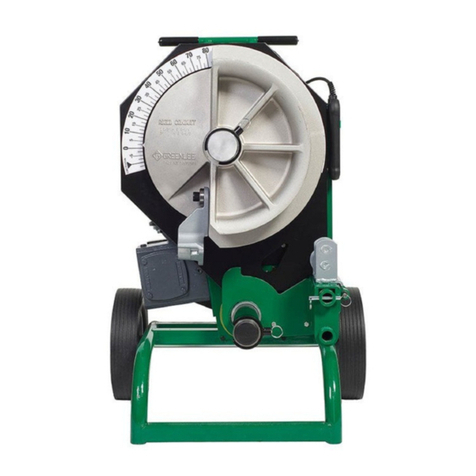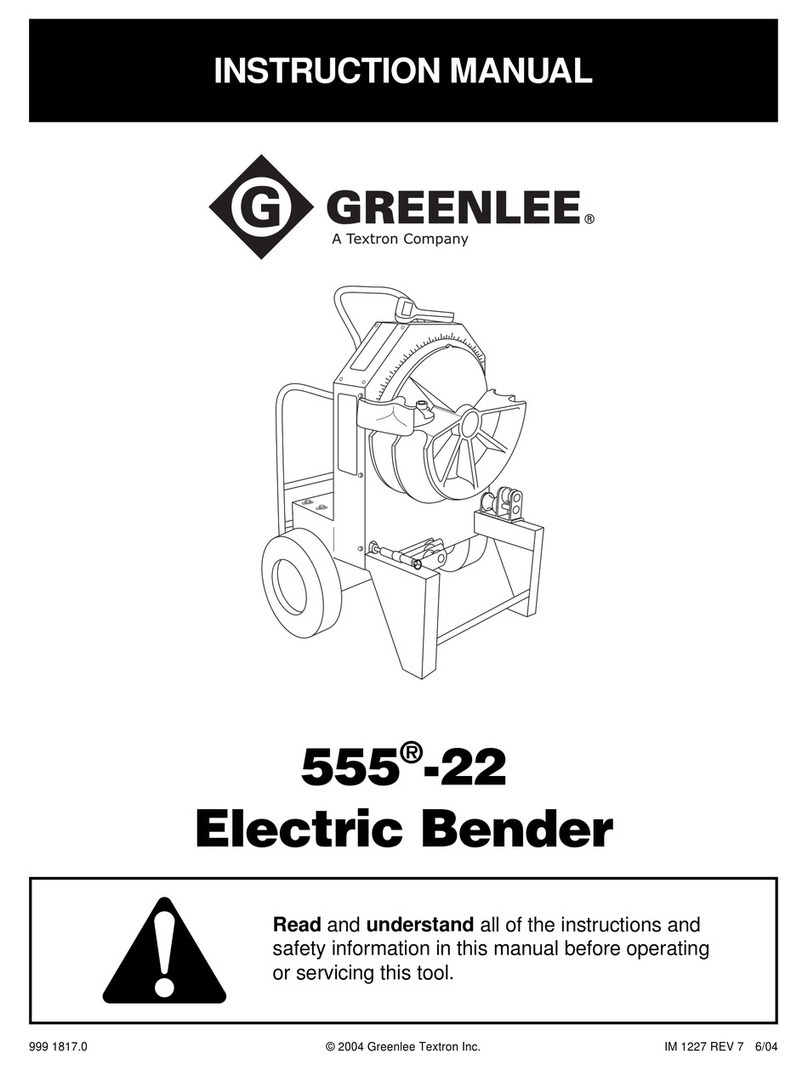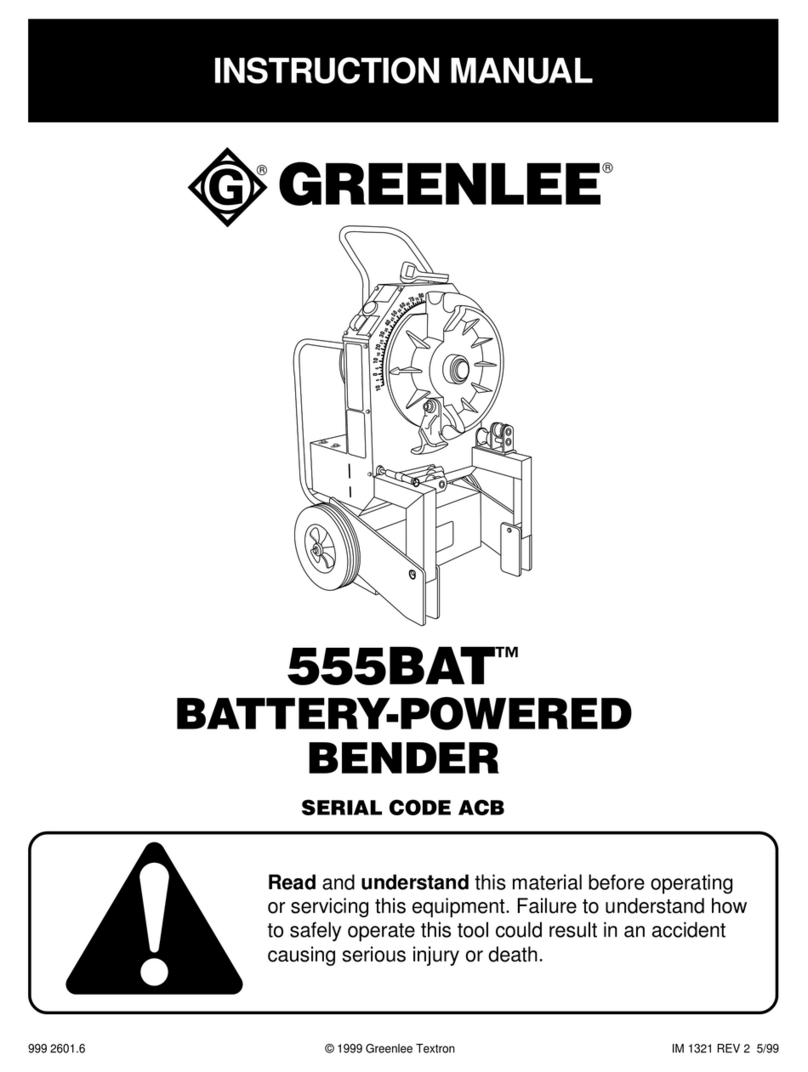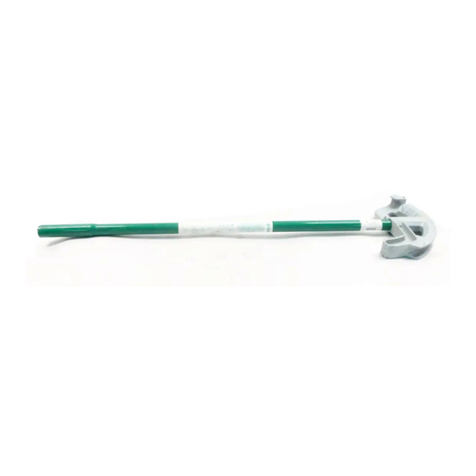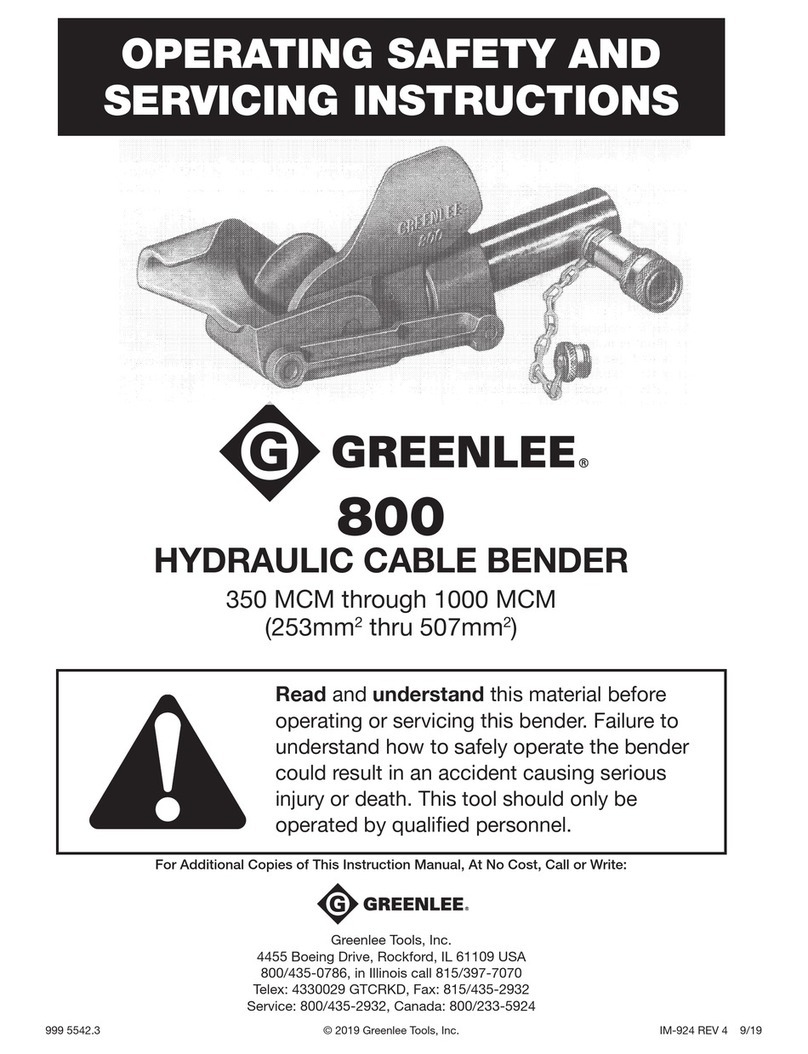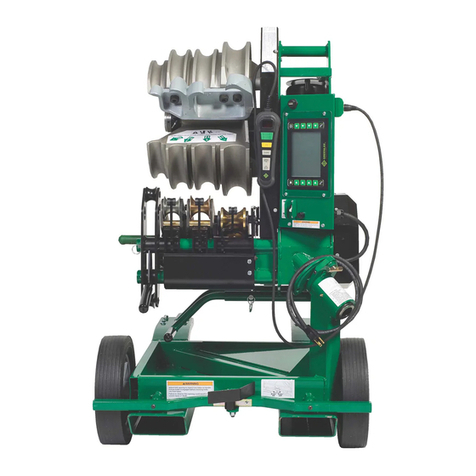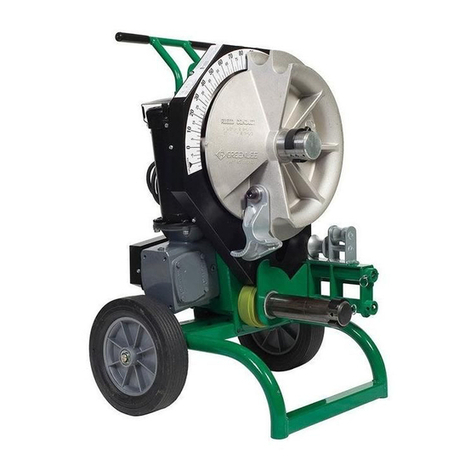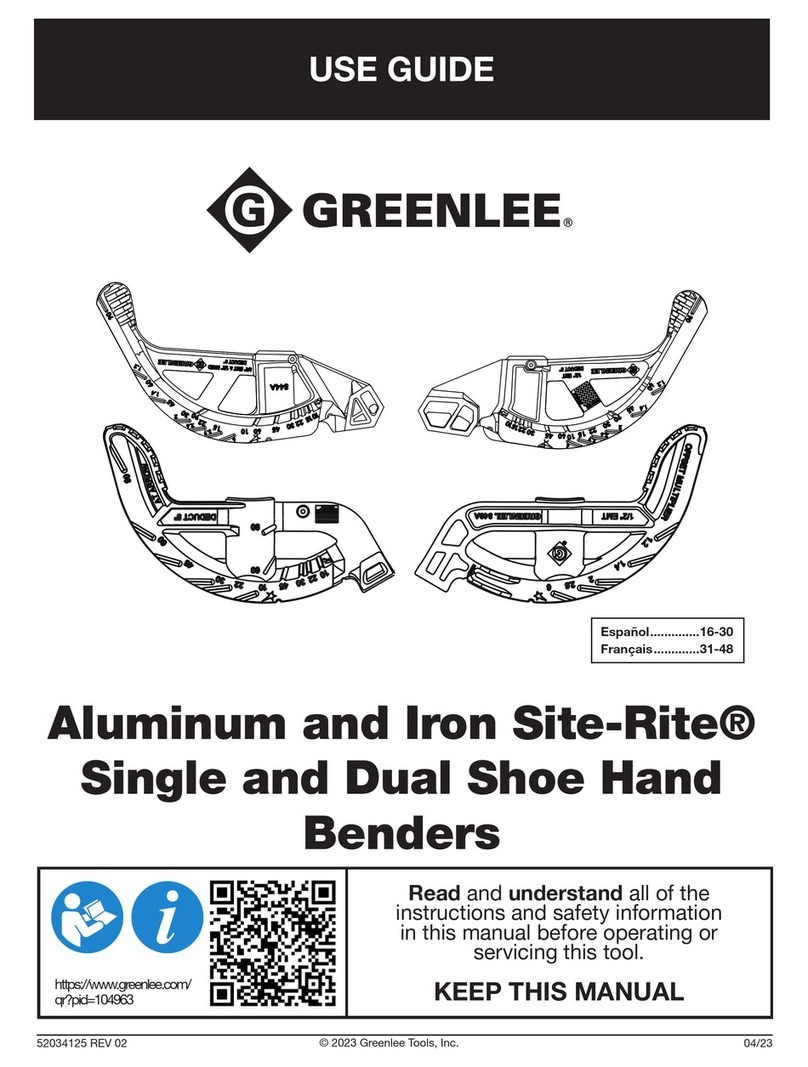
777 Segment Bender
Greenlee Textron Inc. / Subsidiary of Textron Inc. 4455 Boeing Dr., Rockford, IL 61109 815-397-7070
6
Glossary of Bending Terms with Illustrations
1. amount of offset —the dis-
tance that the conduit or pipe
must be re-routed to avoid an
obstruction; see
offset bend
in
this glossary and
Offset Bending
Instructions
in this manual
2. back-to-back bend —any
U-shaped bend formed by two
parallel 90-degree bends with a
straight section of conduit or pipe
between the bends
3. center-to-center distance —
the distance between the
successive bends that make
up an offset or a three-bend
saddle
4. degrees per shot —a segment-
bending term which refers to the
amount of bend accomplished
each time the conduit is bent; to
achieve a smooth bend, each
shot must accomplish the same
number of degrees of bend
5. depth of offset —same as
amount of offset
6. developed length —the actual
length of pipe that will be bent;
see distance “C”in the following
illustration
7. gain —because conduit and
pipe are bent with a radius and
not at right angles, the length of
conduit or pipe needed for a
bend is less than the straight-line
measured length; gain is the
difference between the right
angle distance (A + B) and the
shorter curved distance (C)
8. height of offset —same as
amount of offset
9. kick — single bend of less than
90˚
10. leg length —the distance from
the end of a horizontal section
of conduit or pipe to the bend;
measured from the end to the
outside edge of the conduit or
pipe.
11. 90˚ bend —any bend that
changes the direction of the
conduit or pipe by 90 degrees
12. number of bending shots —
a segment bending term which
refers to the total number of
small bends that are required
to make up a more gradual
segment bend
13. O.D. —the size of any piece of
conduit or pipe as measured by
its outside diameter
14. offset bend —two bends with
the same degree of bend; used
to avoid an obstruction blocking
the run of the conduit or pipe
15. ram travel —the distance that
the ram of hydraulic bender
moves to accomplish a particular
bend; inches of ram travel are
proportionate to degrees of bend
16. rise —the distance from the end
of a vertical section of conduit or
pipe to the bend; measured
outside edge of the conduit or
pipe.
17. segment bend —any bend
formed by a series of bends of
a few degrees each, rather than
a single bend; allows a more
gradual bend
18. shot —a single bend; a shot
may accomplish a complete
bend or, when making a seg-
ment bend, several shots may
be required to make a more
gradual bend
19. shrink —the amount of conduit
“lost”when laying out an offset
bend working toward an obstruc-
tion; see the explanation under
Offset Bending
in this manual
20. springback —the amount,
measured in degrees, that a
conduit or pipe tends to
straighten after being bent
21. stub —same as
rise
22. stub-up —same as
rise
A
B
C

